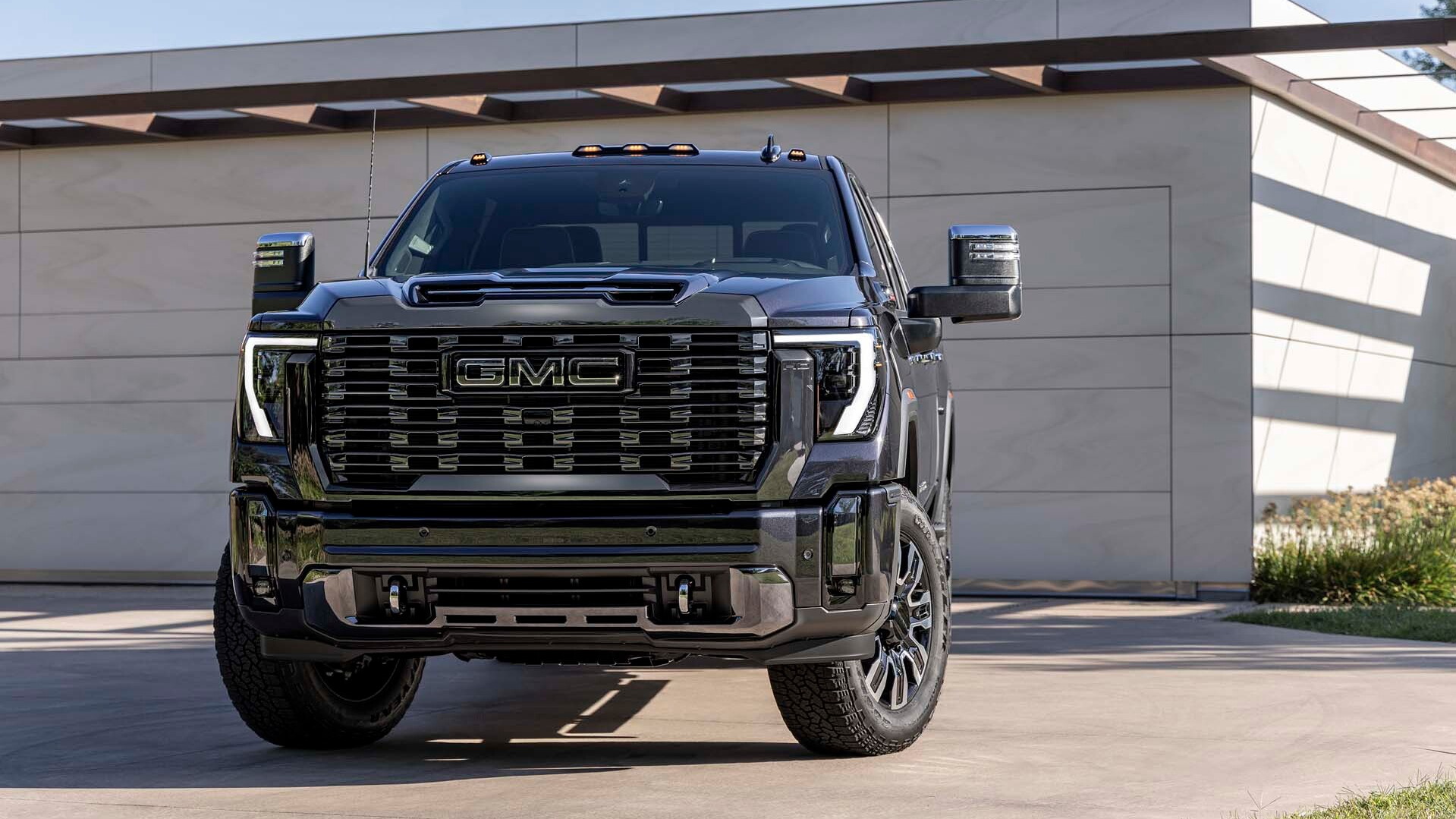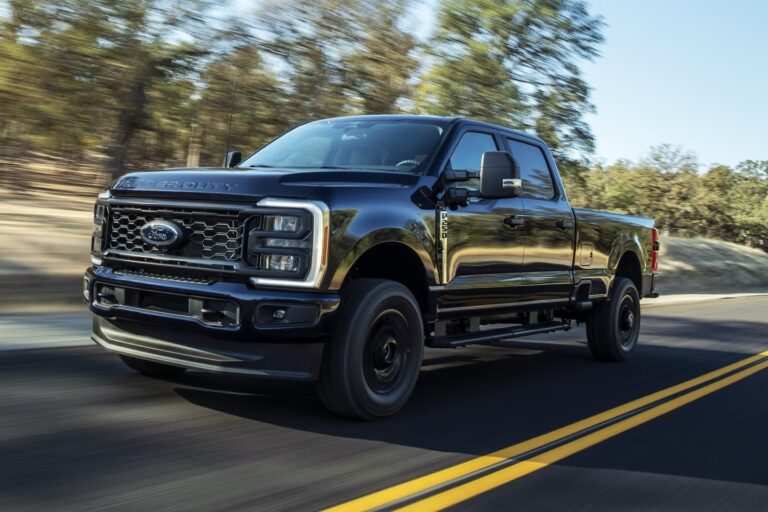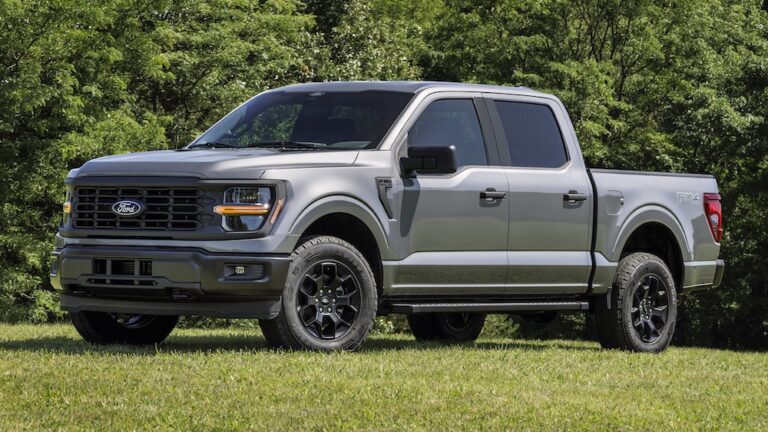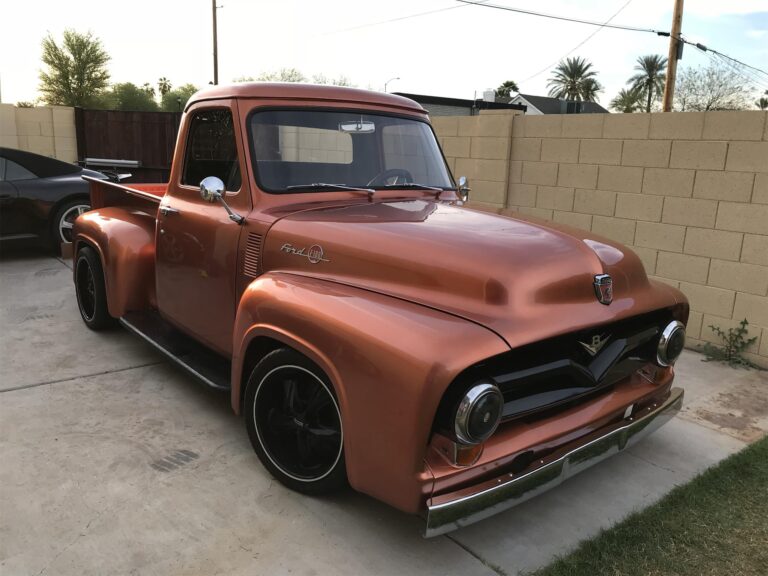GMC Truck Cap Cross Reference: Unlocking Versatility and Value for Your Truck
GMC Truck Cap Cross Reference: Unlocking Versatility and Value for Your Truck cars.truckstrend.com
Your GMC truck is more than just a vehicle; it’s a workhorse, an adventure companion, and often, an extension of your lifestyle. Enhancing its utility with a truck cap (also known as a topper or shell) can transform its cargo area into a secure, weather-protected storage space, an impromptu camping shelter, or even a mobile workspace. However, finding the perfect cap, especially for specific GMC models or when seeking value, isn’t always as straightforward as walking into a dealership. This is where the concept of GMC Truck Cap Cross Reference becomes invaluable.
Cross-referencing, in this context, refers to the practice of identifying and utilizing truck caps that were originally designed for a different year, model, or even a different make of truck, but which happen to fit your GMC truck perfectly or with minimal modification. This guide will delve deep into the world of GMC truck cap cross-referencing, providing you with the knowledge, tools, and insights to navigate this often-overlooked avenue for finding the ideal topper for your rig.
GMC Truck Cap Cross Reference: Unlocking Versatility and Value for Your Truck
Understanding the Basics: What is GMC Truck Cap Cross-Referencing?
At its core, GMC truck cap cross-referencing is about dimensional compatibility. While truck manufacturers introduce new designs and features regularly, the fundamental dimensions of truck beds often remain consistent across several model years, and sometimes, even across different brands within the same automotive family (e.g., GMC and Chevrolet).
The primary reason for engaging in cross-referencing is to expand your options beyond what’s explicitly listed for your exact truck model year. This is particularly useful when:
- Seeking a Used Cap: New truck caps can be a significant investment. The used market offers substantial savings, but finding one specifically advertised for your exact GMC might be challenging. Cross-referencing broadens your search.
- Replacing an Older Cap: If your existing cap is damaged or worn out, cross-referencing helps you find a suitable replacement without necessarily buying brand new.
- Upgrading Features: You might find a used cap from a slightly different model or year that boasts features you desire (e.g., specific window types, interior lighting, roof racks) at a fraction of the cost of adding them to a new base model.
- Finding Discontinued Styles: For older or less common GMC models, new caps might be hard to come by. Cross-referencing opens up possibilities from past production runs.

The key to successful cross-referencing lies in understanding that while exterior styling changes, the critical dimensions of the truck bed – its length, width, and bed rail profile – are the determining factors for cap fitment.
The Benefits of Cross-Referencing Your GMC Truck Cap
Embracing the strategy of cross-referencing offers a multitude of advantages for GMC truck owners:
- Significant Cost Savings: This is often the primary driver. Used truck caps can be found at a fraction of the cost of new ones, sometimes saving you hundreds or even thousands of dollars.
- Wider Selection and Availability: Limiting your search to only caps explicitly listed for your exact GMC year and model can be restrictive. Cross-referencing unlocks a much larger pool of potential caps from various sources and model years.
- Unique Customization Opportunities: You might stumble upon a cap with features or a style that wasn’t originally offered for your specific truck, allowing for a more personalized setup.
- Environmental Sustainability: Buying a used cap is a form of recycling, giving a perfectly functional item a second life and reducing waste.
- Quicker Acquisition: While a new custom-ordered cap can take weeks or even months to arrive, a suitable used cap can often be purchased and installed within days.
Key Dimensions and Measurements for a Perfect Fit
The success of any cross-reference effort hinges on precise measurements. Before you even begin looking for a cap, grab a tape measure and accurately record the following dimensions of your GMC truck bed:
-
Bed Length: Measure from the inside edge of the bulkhead (the wall closest to the cab) to the inside edge of the tailgate, with the tailgate closed. Common GMC bed lengths include:
- Short Bed: Approximately 5 feet 8 inches (5.8 ft)
- Standard Bed: Approximately 6 feet 5 inches (6.5 ft)
- Long Bed: Approximately 8 feet (8.0 ft)
- Note: Always measure the actual bed, as advertised lengths can sometimes be rounded.
-
Bed Width (Front and Rear): Measure the inside width of the bed rails. It’s crucial to measure at two points:
- At the bulkhead (front): Close to the cab.
- At the tailgate (rear): This is vital because many modern truck beds are tapered, meaning they are wider at the rear than at the front. A cap designed for a non-tapered bed won’t fit a tapered one properly, and vice versa.
-
Bed Rail Height and Profile:
- Height: Measure from the top surface of your truck’s bed rail to the bottom of the cap’s sealing surface. This ensures the cap sits flush and level.
- Profile/Contour: This is perhaps the most challenging aspect. Modern GMC trucks often have complex, contoured bed rails, not just flat surfaces. The bottom edge of the cap must match this contour precisely for a proper seal and aesthetic. Visually inspect your bed rails and compare them to photos of the potential cap’s bottom edge. Some older caps have a flatter bottom that won’t seal well on a contoured bed.
-
Cab Clearance: Ensure the cap, once installed, will clear the top of your truck’s cab and any antennas. Some caps are designed to sit slightly higher than the cab, while others are flush.
-
Tailgate Clearance: Confirm that the cap’s rear door will clear your tailgate when opened and closed, especially if your GMC has a multi-pro tailgate or a unique step design.
How to Cross-Reference Your GMC Truck Cap: A Step-by-Step Guide
With your measurements in hand, you’re ready to embark on your cross-referencing journey:
Step 1: Know Your Truck’s Core Identity
- Year, Make, Model: (e.g., 2017 GMC Sierra 1500)
- Cab Type: (e.g., Crew Cab, Double Cab, Regular Cab – this often dictates bed length availability)
- Your Precise Bed Length: (e.g., 6.5 ft, 5.8 ft)
Step 2: Precisely Measure Your Truck Bed
- As detailed above, take all necessary length, width (front and rear), and height measurements. Double-check them.
Step 3: Research Compatible Models and Years
- GMC to GMC/Chevy: Often, caps from different generations of GMC Sierra/Chevy Silverado are interchangeable, especially if the bed dimensions remained consistent. For instance, caps for 1999-2007 "Classic" models might fit across that range. Similarly, 2007-2013 and 2014-2018/19 model years often share cap compatibility within their respective generations for the same bed lengths. The 2019+ redesign introduced more significant bed changes.
- Across Brands (Less Common, More Challenging): While less likely to be a perfect fit, some older, less contoured Ford F-150, Ram 1500, or Toyota Tundra caps might theoretically fit if their bed dimensions closely match. This requires extreme caution and meticulous measurement. Focus primarily on GMC/Chevy first.
- Manufacturer Fitment Guides: Reputable cap manufacturers like Leer, ARE, Snugtop, and ATC often have detailed fitment guides on their websites. While they focus on new caps, these guides can be invaluable for understanding which truck models share compatible bed dimensions. Look up your truck and see what other models are listed with the same cap part number.
Step 4: Leverage Online Resources and Communities
- Truck Forums: Online forums dedicated to GMC trucks (e.g., GM-Trucks.com, Sierra-Denali.com) are goldmines. Search for threads about "truck cap fitment," "interchangeable caps," or "used topper for [your truck year]." Users often share their experiences with successful (or unsuccessful) cross-fits.
- Online Marketplaces: Websites like Craigslist, Facebook Marketplace, eBay, and local classifieds are where you’ll find used caps. When searching, use broad terms like "GMC truck cap," "Chevy Silverado cap," or "6.5 ft truck cap." Don’t limit yourself to just your exact year.
Step 5: Inspect and Measure the Candidate Cap
- Once you find a potential cap, ask the seller for its exact dimensions (length, width, and height of the cap itself). Compare these to your truck’s measurements.
- Visually inspect the cap’s bottom edge. Does it appear to have a flat or contoured profile? Ask for detailed photos.
- Check the overall condition: Look for cracks, excessive fading, broken windows, non-functional latches, or deteriorated seals. These issues can add to your final cost.
Step 6: Test Fit (The Ultimate Confirmation)
- If possible, arrange a test fit before finalizing the purchase. This is the absolute best way to ensure proper sealing, clearance, and aesthetic alignment. Bring your tape measure and a friend to help.
Important Considerations Beyond Just Fit
Beyond the pure dimensional fit, several other factors play a crucial role in a successful cross-reference:
- Bed Rail Contours and Tailgate Design: As mentioned, modern trucks have highly sculpted bed rails. A cap designed for a flat rail will leak on a contoured rail, even if the length and width are perfect. Also, specific tailgate designs (e.g., GMC’s MultiPro tailgate) might interfere with standard cap doors.
- Cab Height and Shape: While not critical for function, a cap that is significantly taller or shorter than your cab, or one that doesn’t flow with the cab’s lines, can look awkward.
- Cap Material: Most caps are fiberglass (durable, paintable, aesthetically pleasing) or aluminum (lighter, often cheaper, more utilitarian). Choose based on your needs and budget.
- Features: Consider what features are important to you: sliding or pop-out windows, interior lighting, third brake light, roof rack compatibility, carpeted interior, side access doors, and locking mechanisms.
- Condition (for Used Caps): Thoroughly inspect for structural damage, cracks, faded gel coat/paint, broken glass, or non-functional latches. Factor in the cost of potential repairs or repainting.
- Installation: Most caps use clamp-on systems, but some may require drilling. Wiring for the third brake light and interior lights can vary; be prepared for basic electrical work or professional assistance.
Tips for Successful Cross-Referencing
- Measure Thrice, Buy Once: There’s no substitute for accurate measurements.
- Use Painter’s Tape: Outline the exact footprint of your bed on the ground or on the cap you’re inspecting to visualize the fit.
- Bring a Friend: Two sets of eyes (and hands) are better than one, especially for measuring and test-fitting.
- Don’t Rush: Take your time researching, measuring, and inspecting. A hasty purchase can lead to expensive regrets.
- Factor in Minor Modifications: A slightly imperfect fit can often be remedied with new, thicker weather stripping, or minor shimming. However, avoid caps that require major structural modification.
- Consider Professional Installation: If you’re not comfortable with wiring or ensuring a watertight seal, a cap dealer can often install a used cap for a fee.
Challenges and Solutions
- Challenge: Slight Dimensional Discrepancies.
- Solution: For minor gaps (up to 1/4 inch), thicker bulb seal weather stripping can often create a watertight seal. For length, shims can be used, but this impacts aesthetics.
- Challenge: Bed Rail Contour Mismatch.
- Solution: This is a major hurdle. Unless the mismatch is extremely minor and can be sealed with specialized foam, it’s often best to avoid such a cap. Custom seals are possible but costly.
- Challenge: Wiring Incompatibility.
- Solution: Most cap wiring (for third brake light and interior lights) is simple 12V. With basic electrical knowledge, you can usually adapt the cap’s wiring to your truck’s harness or run new dedicated wires. Universal wiring kits are available.
- Challenge: Finding Accurate Compatibility Data.
- Solution: Rely heavily on user-generated content in forums, and if possible, contact cap manufacturers directly with specific questions about older models.
- Challenge: Transporting a Large Cap.
- Solution: Truck caps are bulky. Plan to bring a large enough truck or trailer, and enlist a few strong friends to help load and unload.
Factors Affecting GMC Truck Cap Pricing & Value
The "price" of cross-referencing isn’t a fixed number; it’s about evaluating the value proposition. The cost of a truck cap, especially a used one, is highly variable. Here’s a table outlining the key factors that influence pricing and value:
| Factor | Description | Impact on Price/Value |
|---|---|---|
| New vs. Used | New caps offer warranties, customization, and perfect condition. Used caps are pre-owned. | New: High (Typically $2,000 – $4,000+). Used: Low to Medium (Typically $300 – $1,500). |
| Brand & Manufacturer | Premium brands (Leer, ARE, Snugtop) are renowned for quality and features. | Higher for established, premium brands. |
| Material | Fiberglass (common, durable, paintable), Aluminum (lighter, utilitarian), Carbon Fiber (premium, light). | Fiberglass: Mid-High. Aluminum: Low-Mid. Carbon Fiber: Very High. |
| Features & Options | Windows (slider, pop-out), interior lighting, headliners, roof racks, side access doors, power locks. | Each added feature increases cost. |
| Paint Matching | Factory color-matched paint adds aesthetic value and cost. | Significant cost adder for new caps; less so for used (often comes as-is, requiring potential repainting cost). |
| Condition (Used Caps) | Dents, scratches, fading, cracked windows, broken latches, deteriorated seals. | Poor condition significantly lowers price. Excellent condition (used) commands higher prices. |
| Installation & Wiring | Professional installation and electrical hookup services. | Adds to overall cost if not DIY. |
| Location & Transport | Geographic location of the seller and the cost/effort of transporting the cap. | Can be a hidden cost, especially for long-distance purchases. |
| Demand & Rarity | Caps for popular models might be plentiful but in high demand. Caps for rare/older models can be hard to find. | Varies. High demand or rarity can increase price; abundance can lower it. |
Frequently Asked Questions (FAQ)
Q1: Can I put a cap from a Chevrolet Silverado on my GMC Sierra?
A1: Yes, absolutely! For the vast majority of model years and bed lengths, GMC Sierra and Chevrolet Silverado trucks share identical bed dimensions. So, a cap designed for a Silverado of the same generation and bed length will almost certainly fit your Sierra.
Q2: Are truck caps universal?
A2: No, truck caps are not universal. They are highly specific to bed length, width, and bed rail contours. However, as this article explains, there’s a significant degree of cross-compatibility between certain models and generations, especially within the same manufacturer family.
Q3: How do I measure my truck bed for a cap?
A3: Measure the inside length from the bulkhead to the tailgate (closed). Measure the inside width at the bulkhead and at the tailgate (as beds can taper). Also, measure the height from the top of your bed rails to the ground, and visually inspect the contour of your bed rails.
Q4: What’s the difference between a truck cap, topper, and shell?
A4: These terms are largely interchangeable and refer to the same accessory that covers the bed of a pickup truck. "Cap" is common in some regions, "topper" in others, and "shell" is often used for more basic, stripped-down versions.
Q5: Do I need to paint match a used cap to my truck?
A5: This is entirely an aesthetic choice. Many people opt not to paint match, especially if the cap is a neutral color like black or white. However, for a seamless look, you can have a body shop paint the cap to match your truck’s color code. Factor this cost into your budget if you plan to do it.
Q6: How do I seal a cap that’s slightly too short or narrow?
A6: For minor discrepancies, you can use thicker or specialized weather stripping (e.g., bulb seal, closed-cell foam tape) available at auto parts stores or online. For significant gaps, it’s often not worth the effort, as achieving a truly watertight seal can be challenging.
Q7: Where can I find used GMC truck caps?
A7: Excellent sources include:
- Online marketplaces (Craigslist, Facebook Marketplace, eBay)
- Local classifieds
- Used truck cap dealers (some specialize in buying/selling used)
- Salvage yards or junkyards
- Truck forums and social media groups dedicated to GMC trucks.
Q8: What’s the average cost of a used GMC truck cap?
A8: The cost varies wildly based on brand, condition, features, and location. You can find basic, older aluminum caps for a few hundred dollars ($300-$600), while a well-maintained, feature-rich fiberglass cap from a premium brand might range from $800 to $1,500 or more. This is significantly less than new caps, which typically start at $2,000 and can exceed $4,000.
Conclusion
GMC truck cap cross-referencing is a powerful strategy for any truck owner looking to enhance their vehicle’s utility without breaking the bank. By understanding your truck’s precise dimensions, leveraging online resources, and exercising careful inspection, you can unlock a vast market of compatible caps that might otherwise be overlooked. While it requires a bit more effort than simply buying new, the rewards in terms of cost savings, selection, and the satisfaction of a successful find are well worth it. Embrace the tape measure, explore the possibilities, and enjoy the added versatility your "new-to-you" GMC truck cap brings!





